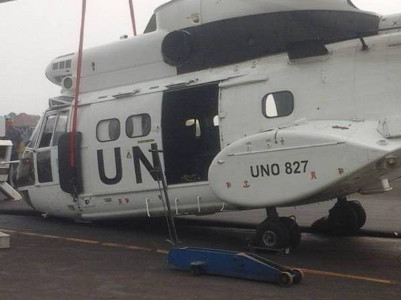
South African soldiers and support personnel selected for deployment to the Democratic Republic of Congo (DRC) as part of the Southern African Development Community (SADC) peacekeeping mission will be “sitting ducks” for the dominant M23 rebels.
Democratic Alliance (DA) shadow defence and military veterans minister Kobus Marais supports his use of the description, pointing out General Rudzani Maphwanya’s SA National Defence Force (SANDF) doesn’t have “the capacity to effectively pursue an anti-insurgency campaign against M23”.
Additionally, the necessary prime mission equipment (PME) to support ground forces is in short supply. Marais maintains the SA Air Force (SAAF) has “no Rooivalk combat support helicopters available and the five Oryx medium transport helicopters currently in DRC will likely be reduced to two”.
The continental deployment of 2 900 South African military personnel – “whether in phases or all at once” – is according to him “easily one of the largest in South Africa’s democratic era” and should not happen because it has “inadequate or no air support”.
“Without proper air cover as well as transport and air elements, the SANDF troops will find it difficult to operate effectively in the eastern DRC, which is a complex and hostile terrain.
“South Africa should not be shouldering a military responsibility that falls squarely with the African Union and the East African Community. We simply do not have that capacity and are definitely out of our depth fighting rebels in a terrain that we are not familiar with.”
Marais call the deployment “impulsive” and asks if President Cyril Ramaphosa, SANDF Commander-in-Chief, is repeating the mistakes of previous continental combat missions. He names Bangui, Cabo Delgado and most recently the DRC where South African troops and aircrew came under fire with unnecessary loss of life.
“There is a high chance that the M23 rebels, using their familiarity of the territory, will resort to tactical ambushes of the SANDF to inflict maximum harm on our troops,” is his prediction of what lies ahead.
Respected defence and military analyst Helmoed Heitman is reported by Johannesburg daily The Citizen as saying the immediate concern is “overstretch of the SANDF” and what he terms “the likely lack of effective air support”.
He is further reported as saying “[the South African] government is trying to be a regional power, while funding little more than a border guard. And why is Angola not coming to the party – with the largest army and air force in the SADC? What about other SADC members?”
Heitman is dismissive of the apparent SAMIDRC force size, said to be in the region of five thousand.
“How can anyone expect 5 000 or fewer troops to achieve what the roughly 15 000 in MONUSCO (United Nations Organisation Stabilisation Mission in the Democratic Republic of the Congo) could not?
“I see no real mention of what air support the troops will have – reconnaissance, mobility and combat. The reality is a force of 15 000 to 20 000, with real air support, would be needed,” he told the newspaper.
The Citizen also approached military intelligence analyst Jasmine Opperman from the Armed Conflict Location and Event Data Project Jasmine. She questioned both the SADC mission size and capability.
“The Rwanda-supported M23 insurgents, comprising about 120 armed groups, have serious advantages – sophisticated weapons, intelligence and a guaranteed constant supply, even if they should lose battles.
“In looking at the recent chopper incident, we see a lack of air force cover – a limited capacity, which led to a tragedy.
“If we could not counter them in Mozambique’s northernmost volatile province of Cabo Delgado, how can we expect them to do that in the DRC, which is far more complex? The Special Forces are stretched and few.”
She said the SANDF deployment in Cabo Delgado province was “in a crisis because of financial support” and the DRC commitment would be far more expensive and prolonged.
Apart from putting lives at risk, Marais maintains the R2 billion price tag put on the deployment is “ridiculous”.
He would rather see the money spent in South Africa upgrading PME and improving SANDF logistic capability where it will do at least some good and not “fighting a war with no strategic value to South Africa”.
“If anything, we should be prioritising the capacitation and deployment of the SANDF to improve border surveillance, both on land at sea. Foreign deployments should only be made when there is clear evidence that events outside our borders pose an immediate and direct threat to South Africa’s national security. The conflict in the eastern DRC does not fall in that category.”
Marais further takes Ramaphosa to task for not “timeously informing Parliament of his intentions as required by the Constitution”. According to him Parliament’s defence oversight committees “became aware of it through the media”.
“By refusing to be transparent, Ramaphosa could be hiding the real reasons why he authorised the deployment – reasons that may have nothing to do with South Africa’s national security.”










